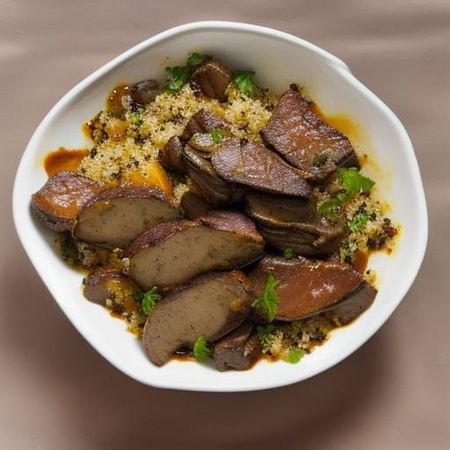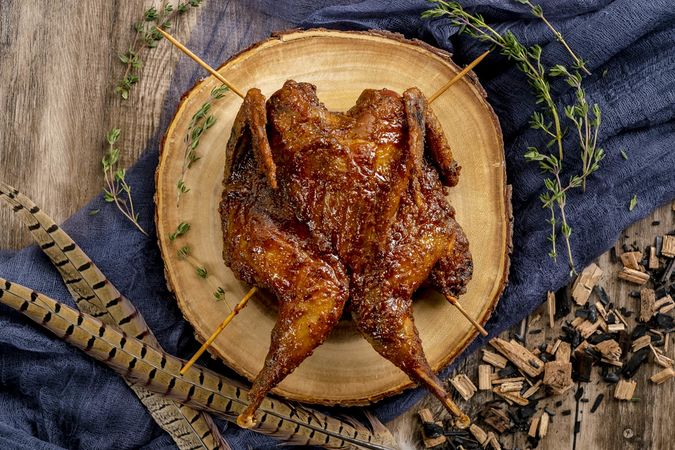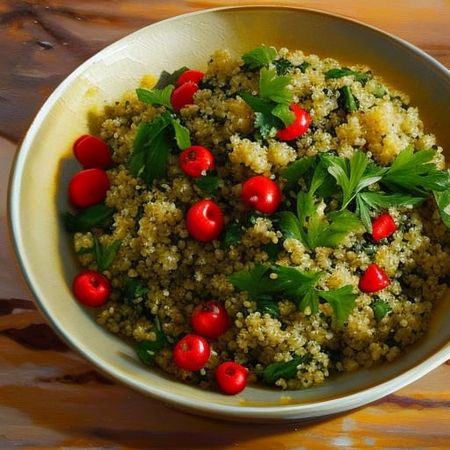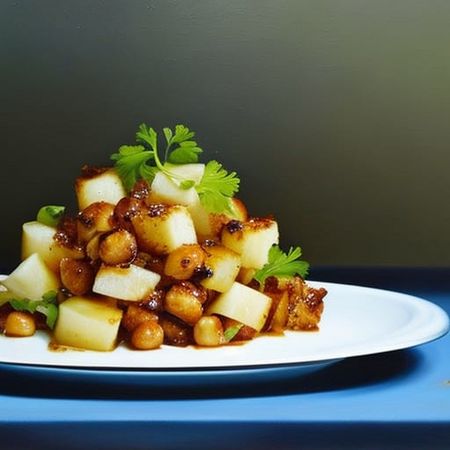Food and diet of Nemnosti
Excerpted from The foods and diet of Nemnosti and the Pardopasu, a manuscript by Acolyte Usuza Hazh, dated 736 I.E.:
Here at Nemnosti the chief meat eaten is the goat. We eat both long-horned goat (ibex) frequently, which can be wild or domesticated, as well as domesticated short-horned goats, which do not live here natively but which have been imported in large numbers, especially on the Lolenivi. A particular delicacy is farfaz, a dish of goat kidneys and liver with rich savoury herbs. We also use lesser cuts of goat meat, ground and then wrapped in dumplings that we call nepunne. Our butter and cheese comes mainly from the goat, rather than the cow, which is rare here in the high mountains. We do occasionally get beef from Daligash, and horse is sometimes eaten as a rare treat, and is enjoyed greatly, but we do not raise horse or cattle for the purpose of eating.
Wild game is abundant in the Pardopasu and in The Ghengom. Rabbit, peahen, and various species of fish are very desirable. The Pasu River is full of freshwater crabs that are harvested year-round. One species of peahen, the shaisen, is raised domestically and we eat both the bird and its eggs. We prepare this bird in many ways, but only in this province is it eaten as a dish called zacheraza, 'as the map' - split open lengthwise and quartered, a representation of the Pardopasu valley itself and the bounty it gives us.
However, note that two kinds of animal are never eaten. First, vultures are sacred here in the high mountains, and none would eat them except in dire circumstances. Second, the ghefi fish, which spawns in the Pardopasu, and its eggs, must not be eaten - although downriver and in Onighus, ghefi eggs are a great delicacy.
The main grain that we eat here at Nemnosti and throughout the province is beska (goosefoot), a flowering plant which grows well at high altitude and has always grown wild here in the upper Pasu and even higher. Its seeds can be eaten raw but are very bitter, which keeps birds from eating it in the wild. Instead, it is washed and then dried, and then it can be cooked and eated as grains, like rice, or ground into a fine powder. We eat the grains boiled with herbs and sour berries in a dish called ghalunuspa. We can turn ground powder into a paste for dumplings and other pastries. We mash it and ferment it to make a hardy beska beer that is well-loved by many here. While barley does grow in the valleys and hills, we do not usually prefer it the way that they do elsewhere. We do get wheat imported from the lowlands, and while the locals do not prefer it, it is certainly a fine treat for those whose palates are influenced by the lowlands.
The main vegetable eaten in the Pardopasu is the white root vegetable, ichuri (celeriac). We eat both the round knobby root and the leafy, flavorful greens, which grow in great rows in the gardens of the rich and poor alike. We also grow and eat hazelnuts that grow on hardy shrubs in the wild, but which we have also domesticated and grow abundantly in our own orchards here at the ulajeta. In times of famine, hazelnuts ground into a fine paste and eaten on flat breads will mainly keep us alive. But a fine dish that can be prepared both simply and more elegantly is jishinosi, which is made of roasted hazelnuts and ichuri and sometimes with other vegetables as well.
Throughout the river valleys of the province, a delicious sour berry called loza grows wild, and we also sometimes farm them, but everyone agrees that wild loza berries are tastier than the ones grown in great fields. There is also an edible flower, rukhardi, that is used alongside other vegetables in salads or used as a pungent herb. There is also a thin, spindly grey-brown root called usoz that is not good for much on its own, but when ground, boiled into a pungent spicy mash, fermented, and distilled, makes a spicy liquor of the same name. Usoz is enjoyed not only here in the Pardopasu, but we also export it to the east.
There are two kinds of mushroom that are eaten often, both of which grow wild in the Pardopasu. The zergei are green or orange, with a funnel shape, and grow in caves, including ones where Ancestors are sometimes stored, and they are eaten reverently on days when the Ancestors are consulted or at other ritual feasts. Then there is the lejum, a mushroom like a ridged grey disk that grows on trees, and reminds many of our alabaster. It can be hard to find them except high in the valley, as wild animals eat them also. But beware the ilurusha, which is dark grey in colour - in small quantities, it can create an ecstatic effect, but will harm you if you are not careful.
Lastly, no one should visit Nemnosti without trying the delicious honey that we grow here. We use honey over any other sweetener, put it in tea, in cakes, and all sorts of other dishes, and of course we use beeswax for candles and soap as well. Our hives here at the ulajeta are the envy of many!



